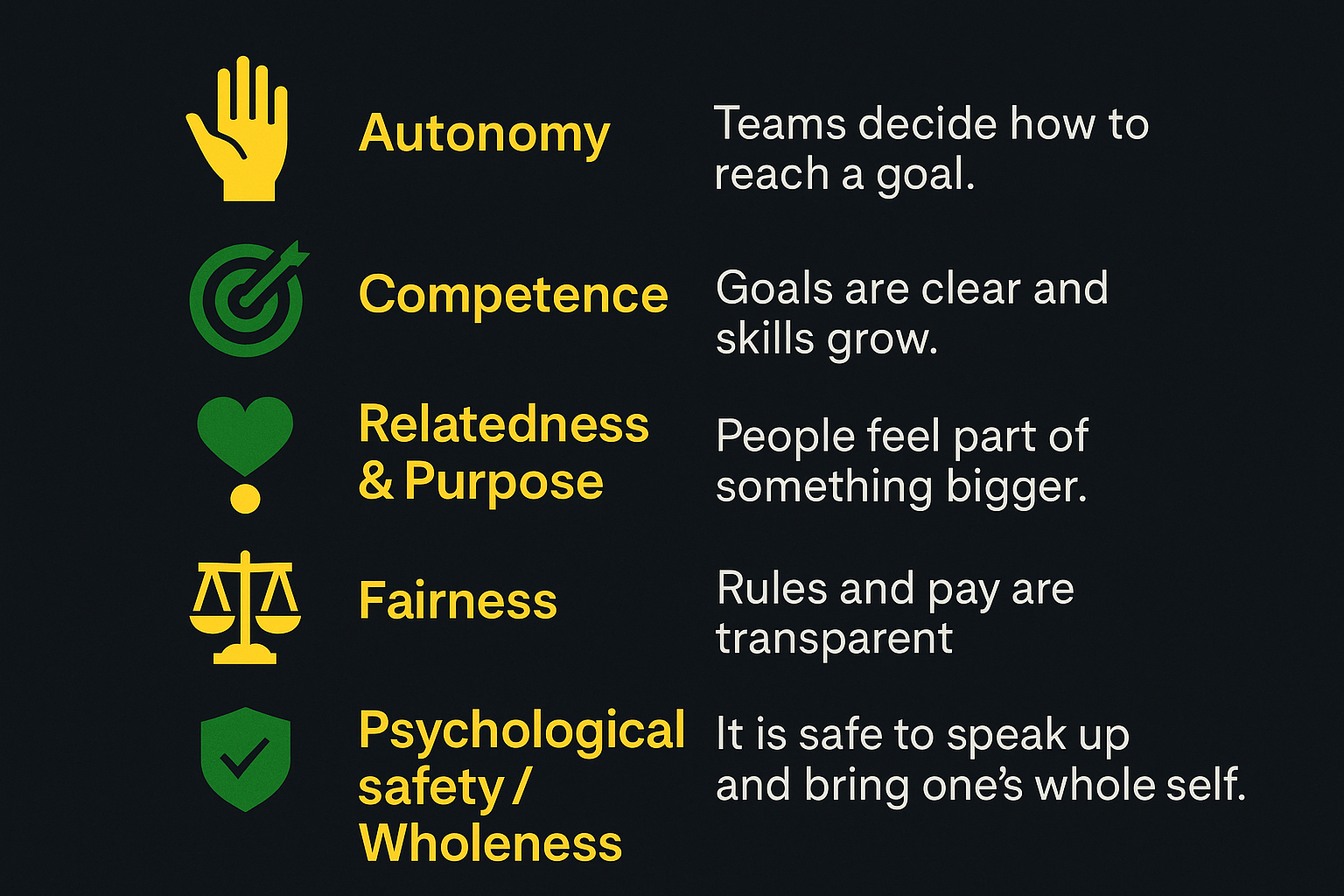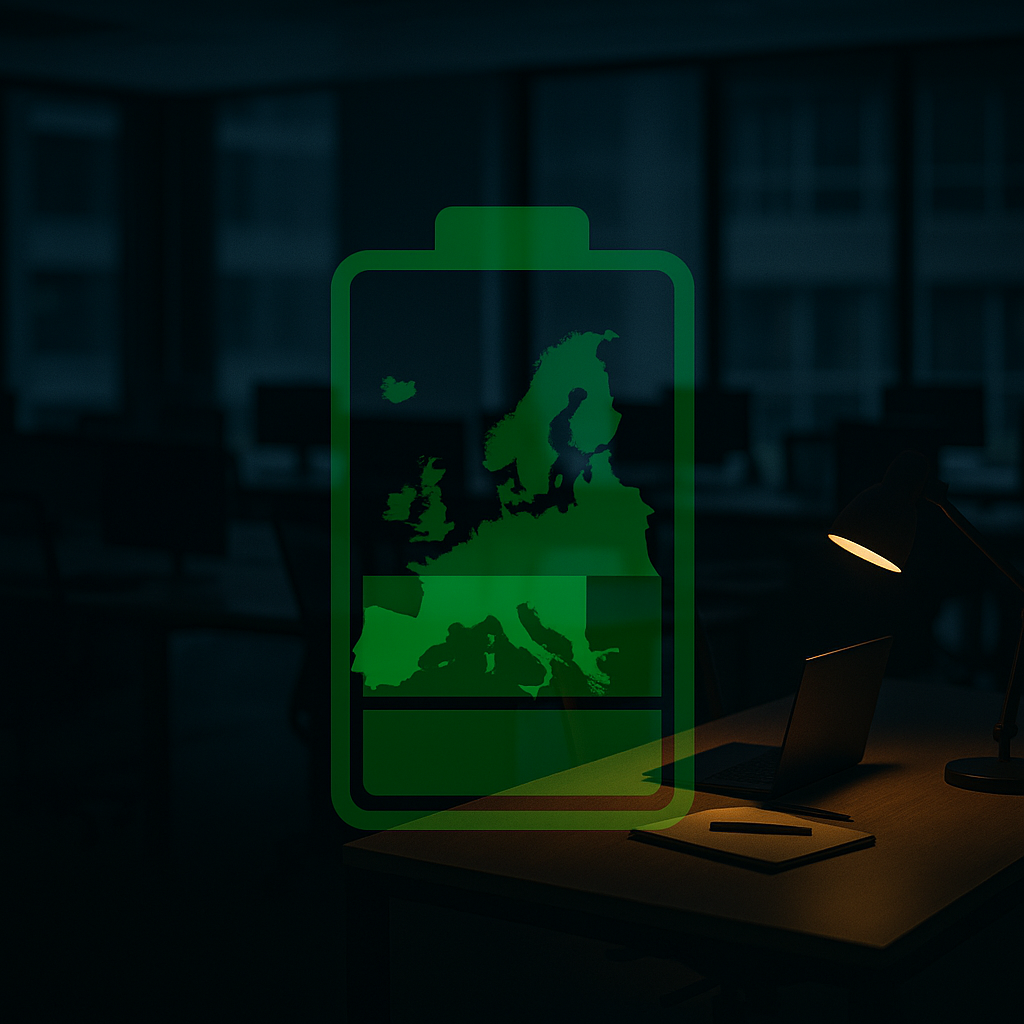Written by Gerda Noormägi

At 08:14 on a regular Monday in Tallinn, a 39-year-old CEO opened her calendar, stared at 11 back-to-back calls, and realised she simply couldn’t log in. Her doctor called it “severe occupational burnout.” Her employer lost its decision-maker for six weeks, her partner reorganised childcare, and the Estonian Health Insurance Fund logged one more sick-leave certificate in a year that would see burnout payouts almost triple to € 844 870 and mental-health incidents reach 275 4651.
Swap the city or the title, and the story echoes across the continent. The World Health Organization now lists burnout as an occupational phenomenon 2, and 76% of employees report experiencing it at least sometimes 3.
The cost cascade — how one strained brain becomes a national bill
Burnout starts as a private tremor and ends up shaking entire economies. On an individual level, one in four European workers reports that the job itself causes anxiety or depression; burned-out staff are 63 % more likely to call in sick and 2.6 times likelier to start job-hunting 4. For families, this means that the exhausted parent is not fully present for their children. A 2025 study of 4,000 households showed that parental burnout drags children’s grades down, turning exhaustion into a dinner-table recession 5.
At the company level, burning out means increased costs and delayed goals. Replacing a depleted specialist can cost up to two annual salaries. Stress already removes approximately € 100 billion a year from EU profit and health budgets.
But also, communities will be affected — depleted workers will volunteer less and disengage from local causes, eroding civic glue 7.
For governments, burnout is a fiscal double punch. First, public coffers bleed cash: across the EU, work-related stress and depression already add about €26 billion a year to healthcare and sick-leave reimbursements. Estonia’s own burnout sick-leave payments tripled in 2024, a local snapshot of that trend. Second, the tax base shrinks. A Swedish register study shows burnout lowers national labour income by 3.6 %, trimming income-tax receipts and dampening GDP growth. Add in staff shortages in state-critical sectors—healthcare, education, public safety—and burnout becomes not just a health issue but a threat to national competitiveness and service quality. 8 9.
Burnout is not an HR footnote; it is a systems failure that travels from a single desk to Europe’s balance sheet.
The wiring fault: 20th-century management in a 21st-century economy
Most organization charts still trace 1911’s scientific-management blueprint: slice the work, stack the approvals, pay for compliance. The result is six chronic mismatches:
1. Workload overload – Constant pressure without sustainable capacity.
2. Lack of autonomy – Low to no say in priorities, processes, or decisions.
3. Insufficient reward – Not just money—lacking recognition, purpose, or meaningful progress.
4. Community breakdown – Politics or toxic norms isolating individuals.
5. Unfairness – Bias and opaque decisions eroding trust.
6. Value conflict – When organizational practices clash with personal ethics and mock the organization’s mission.
We praise agility yet weld on fresh layers of control; we preach innovation yet punish failure. Little wonder the circuits overheat.
Human physics 101 — five conditions that prevent Burnout
Four decades of Self-Determination Theory show that burnout recedes when five workplace “nutrients” are present: genuine autonomy to choose how a goal is met; competence, fuelled by clear targets and skill growth; relatedness and purpose, which let people feel part of something larger; fairness, underwritten by transparent rules and pay; and psychological safety, the freedom to speak up and bring one’s whole self. When this mix is in place, fatigue collapses: a 2025 study of hospital nurses found that empowering leadership—paired with firm boundaries—cut burnout rates sharply¹⁰.

A 2025 study of nurses showed that empowering leadership that also sets clear boundaries cuts burnout sharply¹⁰.
Re-wiring the system— five design decisions
Not sure where to start? Flip these five switches and move from top-down control to a self-managed, purpose-aligned way of working—cutting burnout risk while increasing speed and ownership.
• Decisions at the edge. Use an advice process: those closest to the facts make the call after consulting affected peers (no more than two sign-offs).
• Weekly sense-and-respond. Replace quarterly post-mortems with a 30-minute rhythm that reviews data, learns, and resets next-week commitments.
• Transparency by default. Strategy docs, live dashboards, and pay bands stay open—so everyone can self-regulate, not second-guess.
• Living roles. People update their own roles as work evolves, using peer feedback to keep authority and competence in lock-step.
• Purpose & wholeness rituals. Begin projects with a “why” story, end weeks with peer gratitude—so the organisation’s evolutionary purpose stays audible and every voice can show up whole.
Ignore one layer, and the burnout virus finds a gap.
Proof of the better way
Bosch Power Tools — Germany, 18 700 staff, €5.1 bn rev: collapsed a six-layer hierarchy into about 150 cross-functional “Business Teams.” New-product lead-time shrank from quarters to months, and internal motivation scores jumped 17 points 11.
Haier Smart Home — China-HQ, 122 700 staff, €36 bn rev: 4 000+ global micro-enterprises run their own P&Ls under the RenDanHeYi model. 2024 revenue hit RMB 285.98 bn (+4.3 %) with net profit up 12.9 % 12.
The LEGO Group — Denmark, 31 282 staff, €10 bn rev: a “Leadership Playground” of brave–focused–curious behaviours helped revenue climb to DKK 74.3 bn (+13 %) in a shrinking toy market 13.
ABN AMRO — Netherlands, ≈ 22 000 staff, € 8.88 bn rev: 600+ agile squads and quarterly psychological-safety pulses pushed engagement to 83 % and client NPS to +54 while holding ROE near 10% 14.
BMW Autonomous-Driving Campus — Germany, part of 159 000-person group, € 142.4 bn rev: Engineering hand-offs cut by ~80 %, auto EBIT margin increased 6.3%, and system-integration cycles reduced to under 24 hours 15.
Different industries, same physics:
Autonomy + purpose + fairness = healthier humans and sturdier margins.
Self-audit to run on Monday morning
1. Autonomy: Last critical decision—how many inboxes before action
2. Competence: Can every team trace this quarter’s goal to a KPI they influence
3. Purpose: Could your newest hire explain why today’s sprint matters?
4. Early signals: How fast do sick-leave forms reach the leadership dashboard
5. Single tweak: What structure would free leaders and set guardrails?
Start with those five and you begin to cut the “burnout tax” for yourself, your organisation, and your country.
Sources
1 Estonian Health Insurance Fund, press release, 28 Apr 2025.
2 WHO, ICD-11, 2019.
3 Gallup, State of the Global Workplace 2023 update.
4 Gallup, “Employee Burnout: The 5 Main Causes,” 2020.
5 Peng L. et al., Frontiers in Psychology, 2025.
6 European Trade Union Institute, Report on Work-related Stress, 2025.
7 ESCP Business School, “Work Autonomy and Civic Engagement,” 2024.
8 Czech National Institute of Mental Health, release, 7 Oct 2024.
9 Nekoei A., Sigurdsson J., CESifo Working Paper 11128, 2024.
10 Khan H. S. U. D. et al., BMC Psychology, 2025.
11 Corporate Rebels, “Reinventing Bosch,” 2021.
12 Haier Smart Home, Annual Report 2024.
13 LEGO Group, Annual Report 2024.
14 ABN AMRO, Q1 2025 Results.
15 LeSS Case Study, BMW Group Autonomous Driving Campus, 2019.


